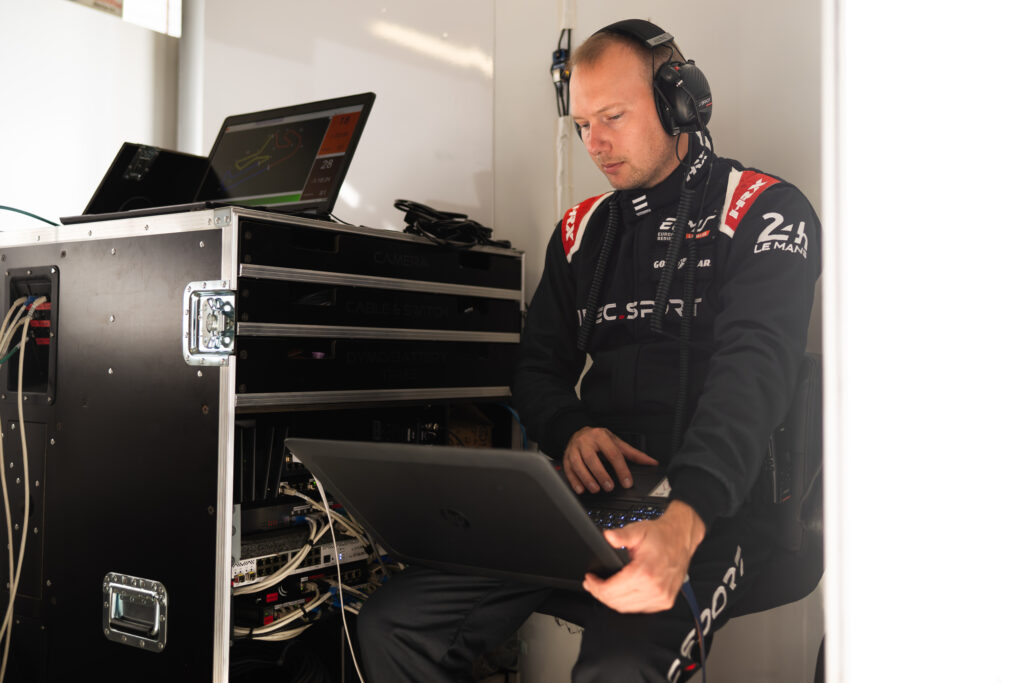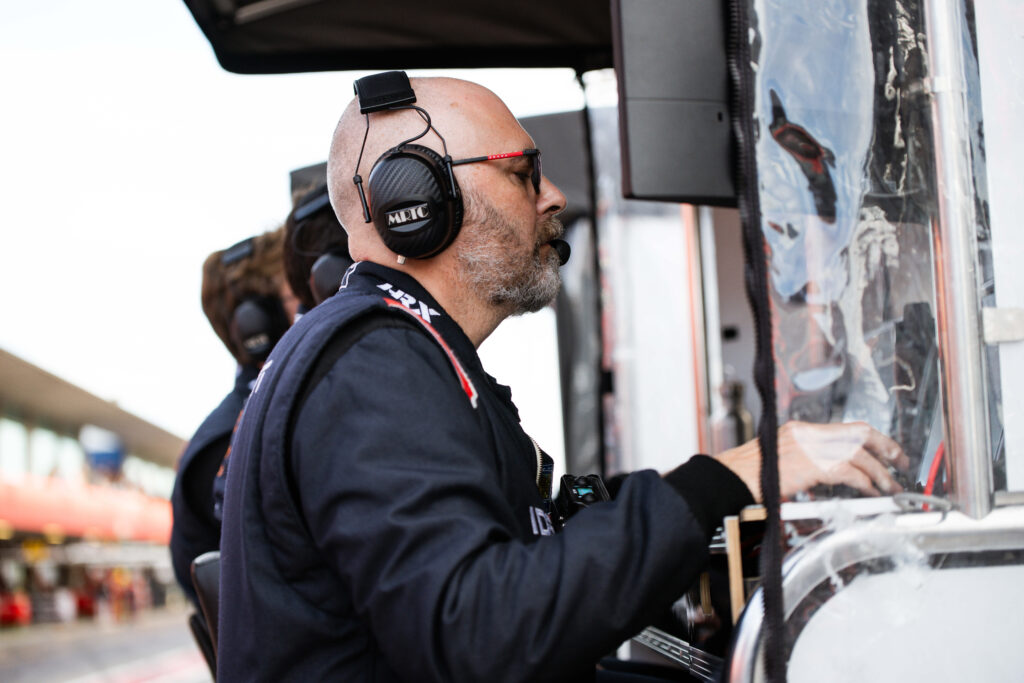The IDEC Group is a recognized player in the design and construction of data centers in France and internationally. But data is not limited to infrastructure: it is also at the heart of the performance of IDEC SPORT, which competes in the 24 Hours of Le Mans. In this interview, Paul Lafargue, driver and director of international development at the IDEC Group, along with the technical team represented by its technical director, Julien Briot, explain how data and artificial intelligence are transforming both motor racing and data center strategy.

Q: What types of data do you collect from the car?
Julien Briot (JB): The raw data from the car isn’t that heavy: about 2 GB over a day of testing. However, high-quality video data is much larger: around 100 to 114 GB. So we work with both numerical data and massive video data streams.
Q: How is this data managed?
JB: That’s the systems engineer’s job. They retrieve all the information from the car, transfer it, and store it on what we call the data station, a kind of “black box” that centralizes and distributes the data via the team’s internal network.
Q: What is this data used for?
JB: First, it is used to monitor the car’s vital components—engine, transmission, chassis—and to validate the reliability of the sensors. Next, it is used by performance engineers to optimize settings and propose improvements. Finally, it contributes to the race strategy.
Q: Precisely, what role does data play in strategy?
JB: We use software such as HH Timing, which is connected to the official timekeeper. It allows us to view lap times, gaps between cars, pit stops, and track positions in real time. This is crucial in the event of a safety car, for example, to adjust pit stop strategy. The software also anticipates the course of the race: it calculates the number of laps remaining before refueling and estimates the car’s future position.

Q: Do all teams use these tools?
JB: No. It’s a strategic choice on our part. We work directly with the developers to configure and adapt the software to our needs. We also use a data management module that centralizes setups, run sheets, fuel consumption, and tire data (pressure, wear, measurements).
Q: Are you also experimenting with AI in this area?
JB: Yes, with the company Mve.dot. Their AI generates personalized reports for drivers based on data such as steering wheel angle, pedal pressure, and GPS. It compares this with the best lap and offers concrete advice. The goal is to save time and give drivers more autonomy without monopolizing the performance engineer. We are one of the first LMP2 teams to use this type of tool.
Q: What are your main challenges in terms of data?
JB: The first challenge concerns volume, because we generate a huge amount of data that needs to be stored and processed quickly. Then there’s quality, because even the slightest error in the data can lead to bad decisions. Finally, security remains a major issue, which we address with constant vigilance to protect our data and ensure its reliability.
Q: How do you store historical data?
JB: We store data on a physical station that we transport with us. But with the expertise of the IDEC Group’s IT department, we have implemented a cloud solution via SharePoint to create copies at the end of the season. This reduces the risk of losing our data in the event of hardware problems.
Q: Can we draw a parallel with the business world?
JB: Absolutely. As in industry, racing generates a growing volume of data that needs to be stored, secured, and analyzed quickly in order to make decisions. Endurance racing is a real-world laboratory for the data challenges faced by businesses.
Q: Data is everywhere today. Do you agree with this observation, both in your role at Idec and in your work as a driver?
JB: Yes, absolutely. Yes, absolutely. Everything revolves around data: our computers, our smartphones. The internet marked a turning point: paper freezes information, whereas data is alive. With AI, we are entering a new era.


Q: What exactly is your role within the Idec Group, and how does it relate to the issue of data?
Paul Lafargue (PL): As Director of International Development for the IDEC Group, I support the rollout of our projects, particularly in the field of data centers. This means mobilizing all of the Group’s expertise—land research, design, construction, and investment—to support our clients in their data-related projects. Data knows no boundaries: it is global and connects us all. It is in this spirit that we support our clients in France, Europe, and Asia.
Q: And as a driver, how do you use data?
PL: In motorsports, we are immersed in data. Telemetry gives us acceleration, braking, and steering angle curves… But with AI, we go further: it compares my laps with those of my teammates, turn by turn. In fifteen minutes, I know exactly what to improve, where it used to take an hour. It’s a huge time and efficiency saver.
Q: Do you also see AI playing a role in race strategy?
PL: Yes, it’s already starting to happen. AI helps decide the best time to react. We’re not in F1, but this technology is becoming more widespread and will transform endurance racing too.

Q: Let’s get back to data centers. How would you define them in simple terms?
PL: A data center is like a giant computer the size of a building. It contains thousands of machines, with redundant systems to ensure continuity. The difference with a data center dedicated to AI is the computing power and, above all, the energy consumption, which can be up to twenty times higher.
Q: What are the major challenges facing data centers today?
PL: The installation of powerful electrical networks, access to fiber optics, and water availability are key factors. Location is also crucial: data centers are becoming larger and larger and can cause nuisances. Our role is to identify suitable sites—often brownfield sites—and transform them in accordance with strict standards, particularly environmental ones. Thanks to our expertise in energy and real estate, we develop solutions that enable data centers to be optimally integrated into the urban fabric and existing networks.
Q: What projects have you already completed at Idec?
PL: We invested in a data center in the Paris region, in the Yvelines department, by acquiring a stake in the company and participating in its construction. This is representative of the Group’s DNA: daring to take on ambitious projects with humility but determination.
Q: Have you also entered into an international partnership?
PL: Yes, a partnership that started in France and which we are supporting with an international vision. We are providing all of our expertise: from land research to design and construction, including real estate investment. Thanks to the strength of the IDEC Group, we are providing a comprehensive solution to support their development and build a long-term relationship of trust.
Q: How do you structure this expertise internally?
PL: We have created Idec Data Center, a dedicated entity based in France but with a global reach. Its mission is to support our customers around the world with their data and infrastructure projects.
